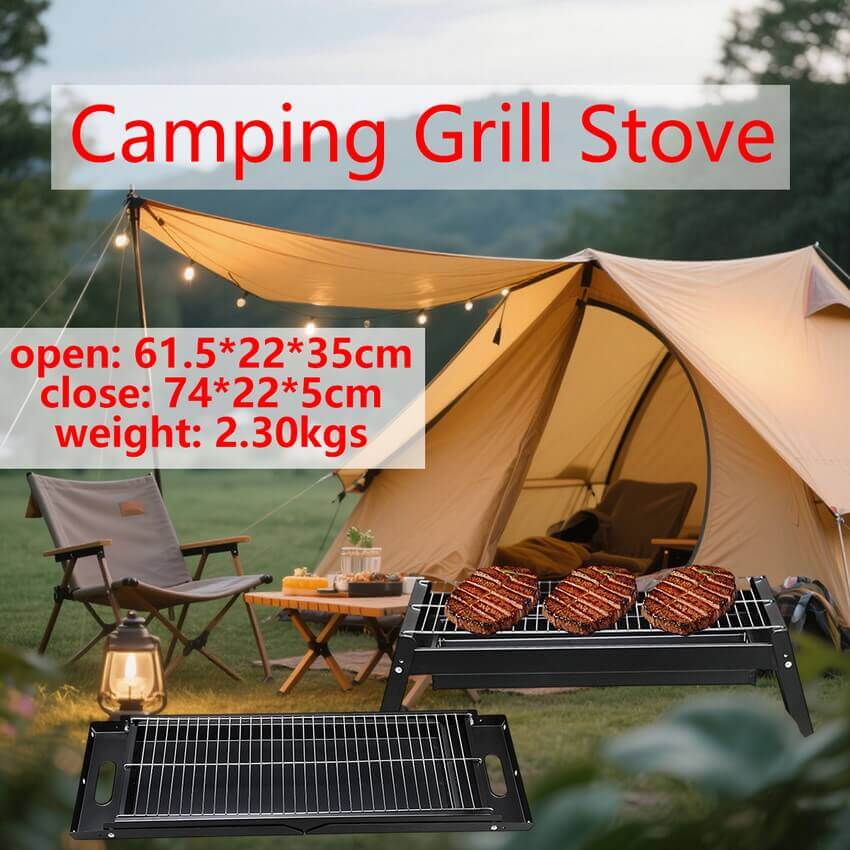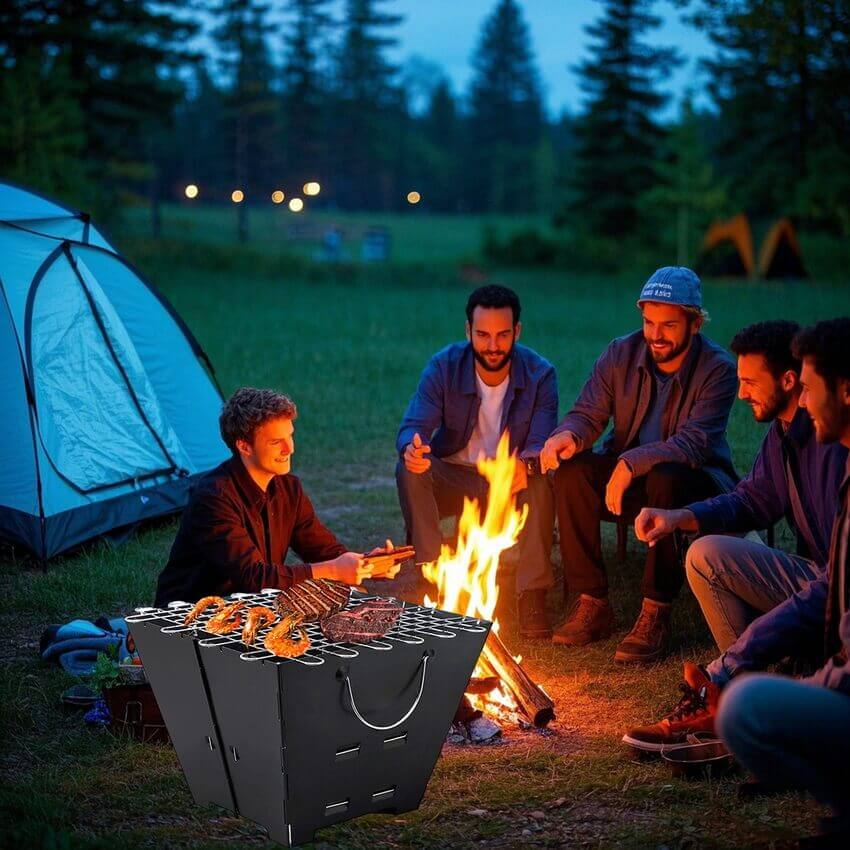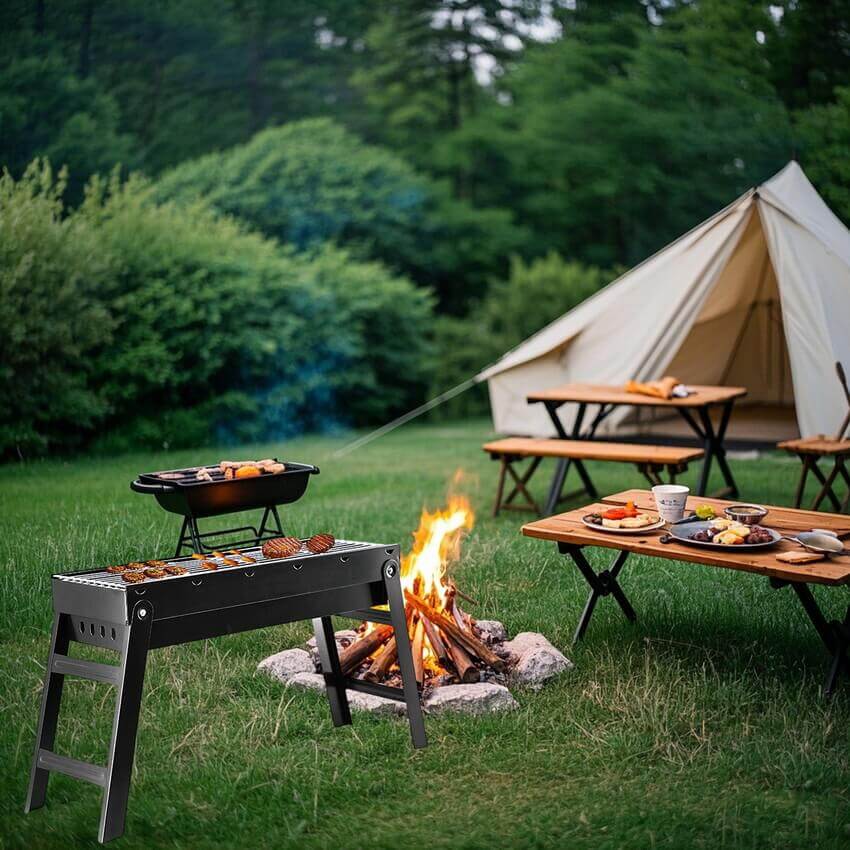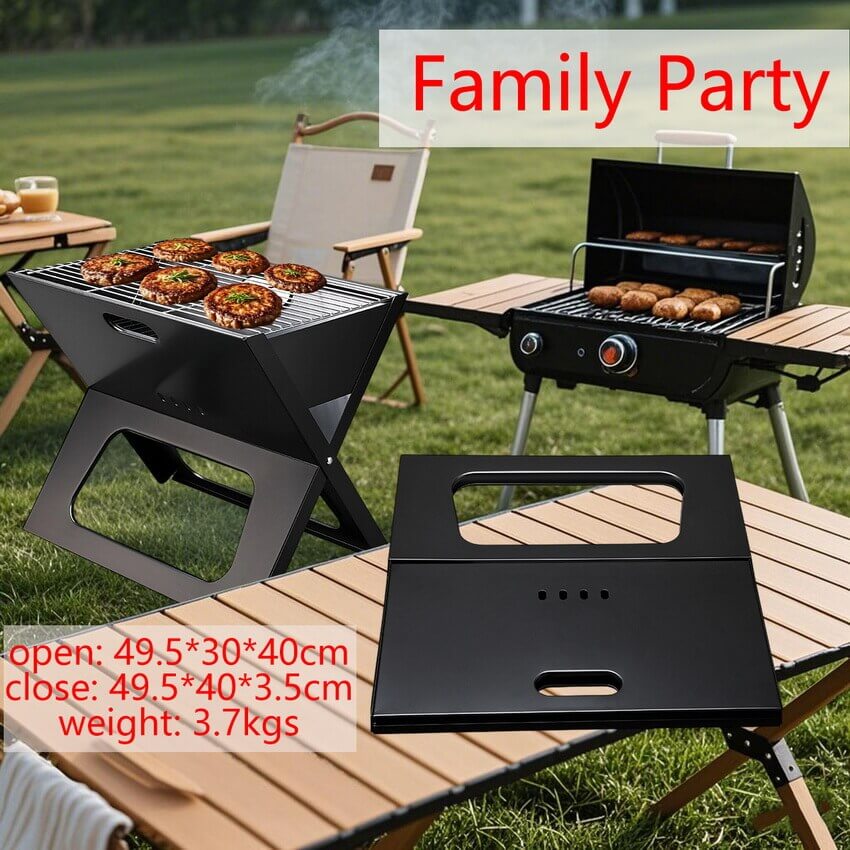![]() Windy.
Windy.
 WeChat
WeChat
 WhatsApp
WhatsApp
Click:310 seen
In the diverse landscape of global barbecue culture, Brazilian barbecue holds a prominent position with its unique charm. Brazilians' passion for barbecue is almost obsessive, and it plays an indispensable role in various settings, from the smoky atmosphere on the streets to the cozy moments during family gatherings. In recent years, the demand for barbecue carts in the Brazilian market has shown a strong trend, becoming a major highlight in the global outdoor cooking equipment sector.
The deep-rooted popularity of barbecue culture and the driving force of daily and social needs
Barbecue has a long history in Brazil, dating back to the early 18th century when cowboys skewered the slaughtered cattle and roasted them with knives. This simple and direct cooking method gradually evolved into the nationwide barbecue culture that is now popular. Today, barbecue has become an integral part of Brazilian daily life and social activities. On weekends or holidays, families can often set up barbecue grills in parks or on beaches to enjoy the barbecue time; community events, friends' gatherings, barbecue is also a must-have, people gather around the grill, tasting delicious grilled meat while chatting and laughing, enjoying a harmonious atmosphere. According to statistics, over 80% of Brazilian families conduct at least one outdoor barbecue activity per month, creating a vast market space for barbecue carts. In cities like São Paulo and Rio de Janeiro, street barbecue stalls are scattered everywhere. These vendors rely on barbecue carts for flexible operation, quickly serving food to passersby. Family consumers also prefer barbecue carts, as their convenience allows them to easily move the barbecue equipment to different outdoor areas such as courtyards and gardens, and start a barbecue party at will.

Large-scale events like the World Cup stimulate purchasing enthusiasm
Football has an unparalleled popularity among Brazilians, and during major football events like the World Cup, it becomes a time of universal celebration. During each event, Brazilian families often gather together, watching tense and exciting matches while enjoying barbecue food, accompanied by beer, immersed in a passionate atmosphere. Relevant data shows that during the Brazilian team's matches in the World Cup, supermarket beer sales increased by 30% - 50%, meat sales increased by 20%, and the popularity of barbecue-related products soared. At this time, barbecue carts become a popular choice for family gatherings, with their large storage space capable of holding various ingredients, seasonings, and utensils, and multi-layered grill design allowing for the simultaneous cooking of multiple foods to meet the needs of multiple diners. Before the 2018 World Cup, the search volume for barbecue carts in Brazil increased by 60% compared to normal days, and many families chose to purchase new barbecue carts to prepare for the frequent gatherings during the event.

The product features are in line with the demands, and the design is innovative, expanding the market
The strong demand for barbecue carts among Brazilian consumers also stems from the fact that these products' characteristics are highly compatible with local usage scenarios. Barbecue carts usually come equipped with large-capacity charcoal fire pits, which can provide sufficient heat to meet the high-temperature and quick-grilling requirements of Brazilian barbecue. They can quickly lock in the meat juices and produce delicious food with crispy outside and tender inside. The multi-level storage rack design is practical, allowing for the classified placement of ingredients, utensils, and seasonings, making the preparation of the barbecue orderly. The bottom wheels make the cart easy to move, enabling it to be easily pushed even on flat park grass or slightly sloped beaches. To further cater to the Brazilian market, manufacturers are constantly innovating in design. Some barbecue carts have added folding functions, reducing their size when stored and making them convenient for home storage; some carts are equipped with detachable grilling nets and trays, meeting different cooking needs, such as replacing the tray when cooking seafood or vegetables to prevent ingredients from falling; and some carts use corrosion-resistant materials to adapt to the humid and hot climate in Brazil, extending their service life.

International purchase orders are pouring in, local and cross-border merchants competing for the market
Facing the strong demand for barbecue carts in the Brazilian market, international purchasers have keenly seized the business opportunity. Recently, a US purchaser placed a large order of 800 barbecue carts with domestic suppliers, stating frankly that these goods will be launched in the Brazilian market. This phenomenon is not an isolated case. In recent years, purchasers from Europe, Asia and other regions have turned their attention to the Brazilian barbecue cart market. In the local market, Brazilian merchants occupy a certain advantage by virtue of their in-depth understanding of local consumption habits and mature sales networks, and continue to launch products with appearance designs and functional optimizations that conform to local aesthetics. The rise of cross-border e-commerce platforms has also provided a new track for global merchants to compete in the Brazilian market. Through these platforms, high-quality foreign barbecue carts can directly reach Brazilian consumers, attracting a large number of customers with innovative designs and high cost performance. Some characteristic barbecue carts launched by domestic manufacturers, due to their compact and practical design and affordable prices, are deeply popular in the Brazilian market and have received a large number of orders on cross-border e-commerce platforms.

Looking ahead, as the Brazilian economy continues to develop, residents' living standards further improve, and the barbecue culture continues to be passed down and developed, the demand for barbecue carts in the Brazilian market is expected to maintain a growth trend. Both local merchants and cross-border enterprises need to continuously monitor changes in consumer demands, increase investment in product research and development, improve product quality and service levels, in order to seize a larger share in this booming market and achieve substantial commercial returns.
